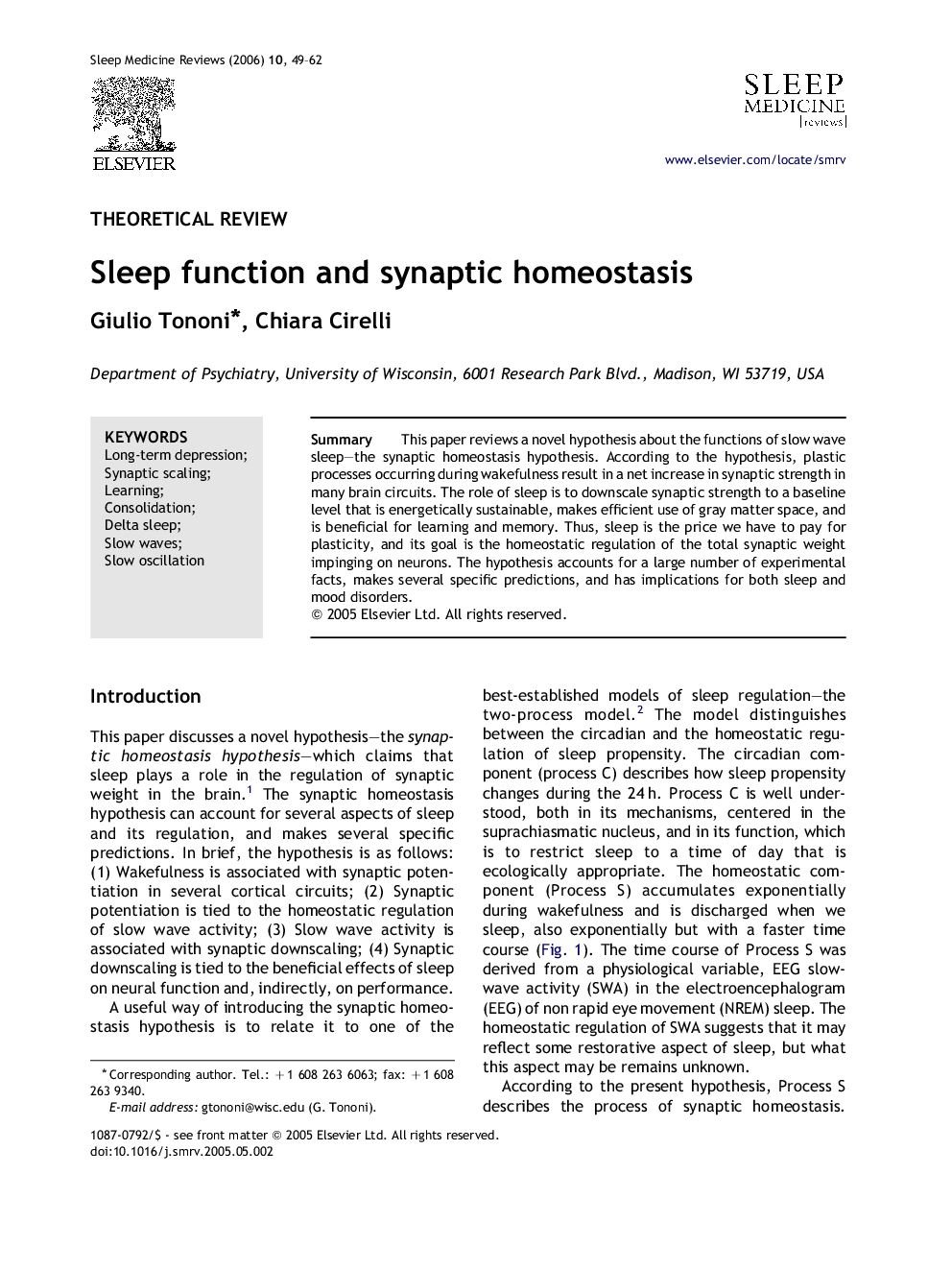| Article ID | Journal | Published Year | Pages | File Type |
|---|---|---|---|---|
| 3091837 | Sleep Medicine Reviews | 2006 | 14 Pages |
SummaryThis paper reviews a novel hypothesis about the functions of slow wave sleep—the synaptic homeostasis hypothesis. According to the hypothesis, plastic processes occurring during wakefulness result in a net increase in synaptic strength in many brain circuits. The role of sleep is to downscale synaptic strength to a baseline level that is energetically sustainable, makes efficient use of gray matter space, and is beneficial for learning and memory. Thus, sleep is the price we have to pay for plasticity, and its goal is the homeostatic regulation of the total synaptic weight impinging on neurons. The hypothesis accounts for a large number of experimental facts, makes several specific predictions, and has implications for both sleep and mood disorders.
